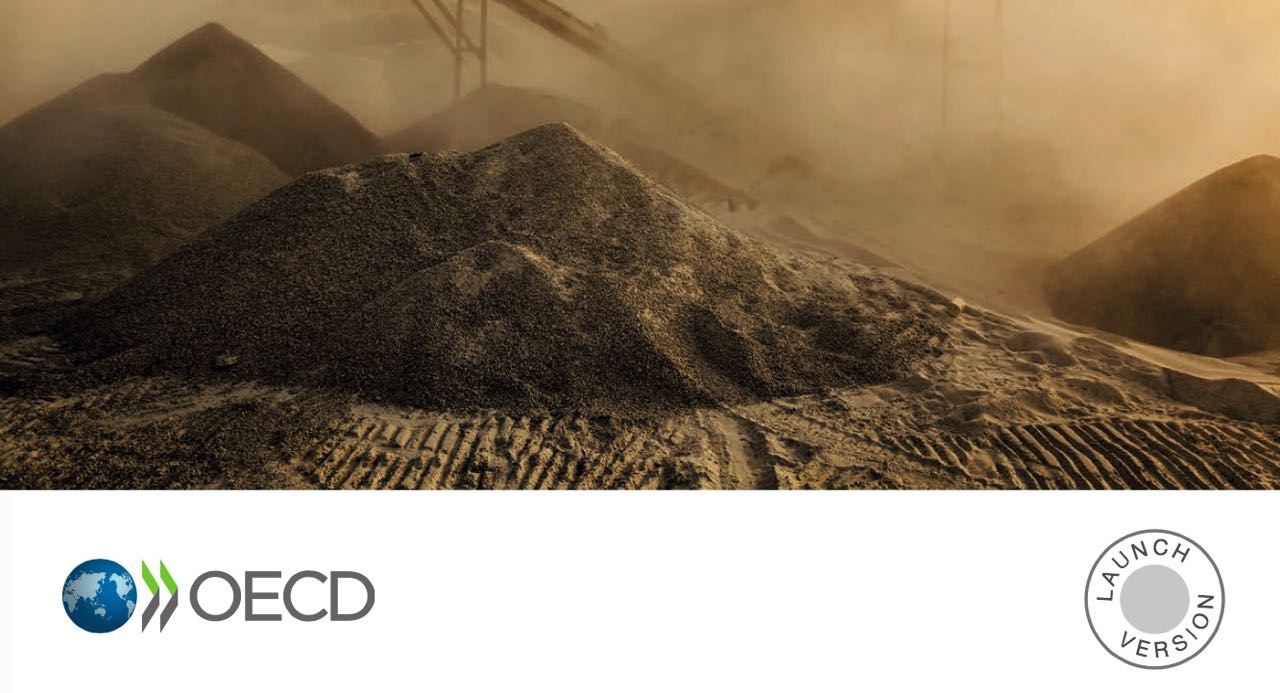Düstere Prognose der OECD
Ressourcenverbrauch wird sich bis 2060 verdoppeln
Die österreichische Plattform ‚RepaNet‘ hat eine Zusammenfassung publiziert, die wir hier dankend wiedergeben. Das originale Summary der OEDC-Studie in Form eines Executive abstracts finden Sie unter dem Stichwort OECD auf der englischsprachigen Site von BIOTOPE CITY.

Eine neu veröffentlichte Studie der OECD zeigt uns auf deutliche Weise, in welch schwindligen Höhen sich unser Materialkonsum in gut 40 Jahren befinden wird – wenn es keine wesentlichen politischen Änderungen gibt.
Unser Ressourcenkonsum ist heute so hoch wie noch nie. Seit der Mitte des 20. Jahrhunderts schnellt die Verbrauchskurve förmlich in die Höhe – und ein Ende ist nicht in Sicht, ganz im Gegenteil. Vor kurzem hat die OECD eine sehr detaillierte Studie zu diesem Thema veröffentlicht. Im „Global Material Resources Outlook to 2060. Economic Drivers and Environmental Consequences“ wird die Entwicklung des globalen, sektoralen und regionalen Materialverbrauchs quantitativ analysiert und eine Analyse der zu erwartenden Umweltauswirkungen vorgenommen. Das Ergebnis: Es wird für alle Bereiche ein Wachstum prognostiziert. Auch künftig werden nicht-metallische Mineralstoffe den größten Anteil haben – sie dienen als Baustoffe, und die Baubranche hat den größten Materialkonsum. Umso wichtiger sind also Projekte wie BauKarussell, die darauf hinarbeiten, durch innovative Konzepte Re-Use am Bau zum Mainstream zu machen. Doch der Weg ist noch weit.
Ohne politische Änderungen ist Wachstum nicht zu bremsen
Das Angebot an Sekundärrohstoffen wird in Zukunft zwar wachsen, doch der steigenden Nachfrage nicht genügen. Der Materialkonsum pro Kopf wird bis 2060 um etwa 44% steigen. Was die regionale Verteilung betrifft, so rechnet man mit größeren Zuwächsen in Schwellen- und Entwicklungsländern. Die Hauptprognose der OECD-Studie ist folgende: Der jährliche Ressourcenkonsum wird sich zwischen 2017 und 2060 annähernd verdoppeln, wenn die politischen Rahmenbedingungen in etwa gleich bleiben.
In einem zweiten Teil werden die zu erwartenden Umweltauswirkungen analysiert, etwa betreffend die wichtigsten Metalle sowie Beton. Zum Thema Klimawandel: Das in Paris ausgehandelte Zwei-Grad-Ziel wird ohne bedeutende politische Veränderungen nicht erreicht werden. Allgemein wird festgehalten, dass sich die Auswirkungen bis 2060, je nach Kategorie, verdoppeln bis vervierfachen werden. Der Bericht macht die Notwendigkeit von drastischen politischen Änderungen also mehr als deutlich.
Erst dieses Frühjahr wurde von einem Forscherteam rund um das Institut für Soziale Ökologie an der Universität für Bodenkultur Wien gezeigt, dass geringerer Ressourcenverbrauch durchaus möglich ist – und zwar, ohne dass wir auf gesellschaftlichen Wohlstand verzichten müssen (lesen Sie hier mehr dazu). Um das zu erreichen, müssen Politik, Forschung, Industrie und KonsumentInnen zusammenwirken. Das Grundproblem ist der lineare Durchfluss von Materialien durch ein Wirtschaftssystem – vom Abbau bis zur Rückgabe an die Natur. Um diesen erfolgreich zu minimieren und trotzdem weiterhin innerhalb des Systems genügend Produkte zur Verfügung zu stellen, müssen Re-Use und Reparatur verstärkt praktiziert werden. Wirksame Mittel dafür sind öffentliche Förderungen und öffentliche Beschaffung. Denn wenn wir echte Kreisläufe schaffen, in denen Produkte und Materialien möglichst lange in hoher Qualität erhalten werden, können wir darauf hinwirken, dass sich die Prognose der OECD so nicht bewahrheitet.
Mehr Infos :
Download-Link des „Global Material Resources Outlook to 2060“ in der RepaThek
Video: Green Talks Live: Materials use to 2060 – Economic drivers and environmental consequences
RepaNews: AG Rohstoffe: Es ist Zeit für ein sozial-ökonomisches Upgrade der Rohstoffpolitik!
